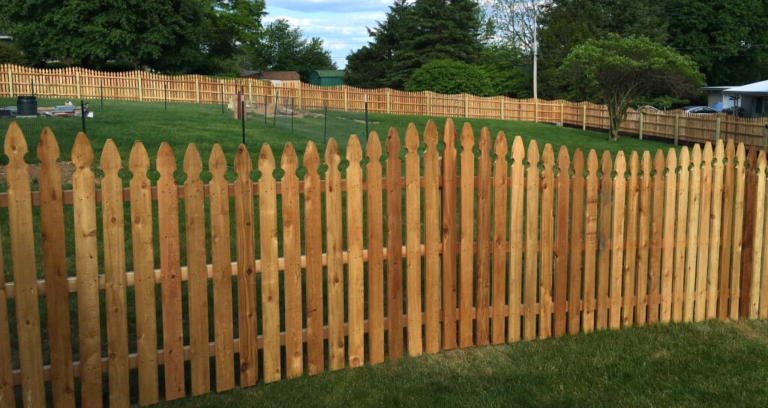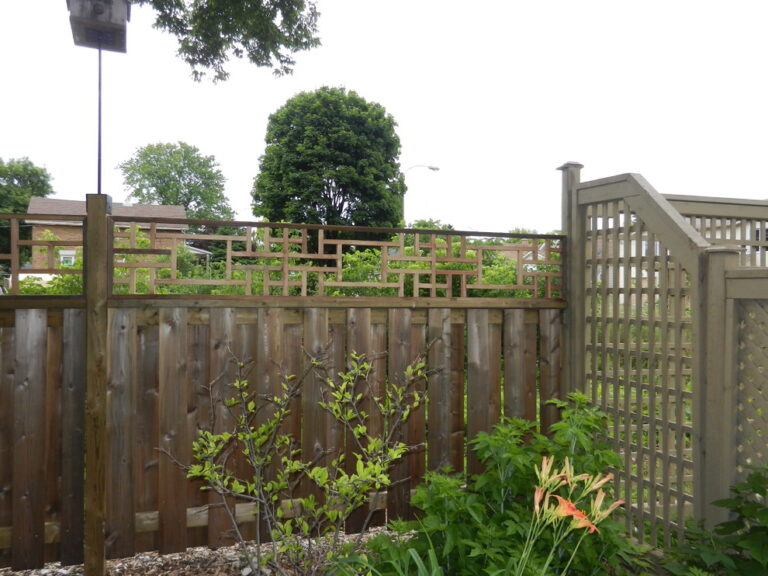Fencing in contemporary garden design serves both functional and aesthetic purposes. It provides privacy, security, and boundary definition, while also adding visual interest, texture, and depth to the outdoor space.
Incorporating fencing into garden design can help create a cohesive and harmonious outdoor environment, enhancing the overall appeal and value of the property.
Modern garden design is characterized by a seamless integration of natural and manmade elements, and fencing plays an essential role in achieving this balance.
Whether used as a backdrop for planting, a frame for outdoor living spaces, or a standalone architectural feature, fencing contributes to the overall ambiance of the garden.
We will explore the various design considerations and creative possibilities that fencing offers in contemporary garden design.
Whether you are a homeowner, landscape designer, or gardening enthusiast, understanding the role of fencing in garden design can inspire and inform your outdoor projects.

Defining Fencing In Modern Landscaping
However, the selection of the right fencing style and material is key to achieving this harmony between functionality and aesthetics.
In Vacaville, California, where garden design is taken seriously, a prominent provider of fencing solutions, https://www.fencingvacavilleca.com, stands out.
Their expertise in offering a wide range of fencing options, from classic wooden fences to modern composite materials, ensures that every garden retains its unique character while gaining enhanced privacy and security.
Evolution Of Fencing Styles In Garden Design
Over the years, the role of fencing in garden design has evolved. Traditional fencing materials such as wood and wrought iron have given way to newer, more versatile materials like composite materials and aluminum.
This evolution has brought about a shift in fencing styles, from classic picket fences to sleek, minimalist designs that complement contemporary landscaping.
The diversity and versatility of modern fencing materials and styles enable garden designers to create visually stunning and functional spaces that harmonize with the overall design aesthetic.
Practical And Aesthetic Functions In Contemporary Settings
In contemporary garden design, fencing serves dual roles – practical and aesthetic. On the practical side, it provides essential privacy, security, and boundary demarcation.
Aesthetically, fencing frames the garden space creates visual interest, and complements the overall design theme.
The right fencing can add texture, color, and visual appeal to the garden, enhancing the sense of space and creating a cohesive look that ties the landscape together.
This dual function makes fencing an indispensable element in contemporary garden design.
Incorporating Fencing Into Garden Themes
Gardens can be transformed into captivating outdoor spaces by incorporating fencing into their design.
The role of fencing in contemporary garden themes is vital, as it not only provides security and privacy but also contributes to the overall aesthetic appeal.
Harmonizing Fencing With Different Garden Styles
When it comes to incorporating fencing into garden themes, it’s imperative to harmonize the style of the fencing with the overall design concept of the garden.
Fencing designs should complement the existing elements in the garden, whether it’s a modern, minimalist garden or a traditional, rustic one.
Utilizing Fencing Materials And Textures For Visual Impact
The choice of fencing materials and textures can significantly enhance the visual impact of the garden.
Utilizing natural materials such as wood or bamboo can bring warmth and organic charm to the space, while sleek metal or glass fencing can lend a contemporary and sophisticated touch.
In addition to the materials, the texture of the fencing, such as smooth, rough, or patterned surfaces, can add depth and visual interest to the garden.
By strategically integrating different textures, the fencing becomes an essential visual element in the overall garden theme.
Sustainable And Eco-friendly Fencing Solutions
When it comes to contemporary garden design, the role of fencing goes beyond mere functionality.
Sustainable and eco-friendly fencing solutions have emerged as a vital component, striking a harmonious balance between aesthetics and ecological considerations.
Implementing environmentally conscious fencing practices and ensuring that garden design adheres to ecological principles are crucial aspects that can enhance the overall appeal and sustainability of a garden space.
Implementing Environmentally Conscious Fencing Practices
When implementing environmentally conscious fencing practices, it is essential to prioritize materials and construction methods that have minimal environmental impact.
Opting for sustainably sourced wood or recycled materials for fencing can significantly reduce the carbon footprint associated with the construction process.
Additionally, utilizing natural and untreated materials helps to minimize the release of harmful chemicals into the environment.
Incorporating living fences such as hedgerows or vertical gardens not only adds a touch of natural beauty but also contributes to air purification and biodiversity.
These living fences serve as habitat for beneficial insects and wildlife, thereby promoting a thriving ecosystem within the garden.
Balancing Aesthetics With Ecological Considerations In Garden Design
When designing a garden, it’s imperative to strike a balance between aesthetics and ecological considerations.
Utilizing bamboo fencing offers a sustainable alternative to traditional hardwoods, providing a visually appealing option that aligns with eco-friendly principles.
Additionally, employing locally sourced materials reduces transportation-related emissions and supports the regional economy.
Incorporating eco-friendly features such as rainwater harvesting systems and solar-powered lighting into the overall garden design further enhances its sustainability.
By integrating these elements, the garden becomes not only visually appealing but also functional in minimizing its ecological footprint.

Frequently Asked Questions
What Is The Purpose Of Garden Fencing?
Garden fencing serves to protect, define, and enhance outdoor spaces. It helps keep pets and kids safe, prevents trespassing, and adds privacy and aesthetic appeal to your garden.
Good quality fencing can also deter pests and provide support for climbing plants.
Why Should We Put Fence Around The Garden?
A fence around the garden helps prevent damage from pests and animals. It also provides privacy and security. Additionally, it adds a decorative element to your outdoor space.
What Are The Benefits Of A Garden Fence?
A garden fence provides security, privacy, and protection for plants and pets. It adds aesthetic appeal and increases property value.
Additionally, it helps to define boundaries and prevents trespassing and wandering. A well-maintained fence also enhances the overall landscape and keeps out unwanted pests.
Conclusion
Incorporating well-designed fencing into your garden can transform the entire space.
It adds structure, privacy, and visual appeal to your outdoor space, enhancing the overall aesthetic and creating a sense of enclosure.
Whether it’s a contemporary design or a traditional style, fencing plays a pivotal role in defining and complementing modern garden landscapes.







